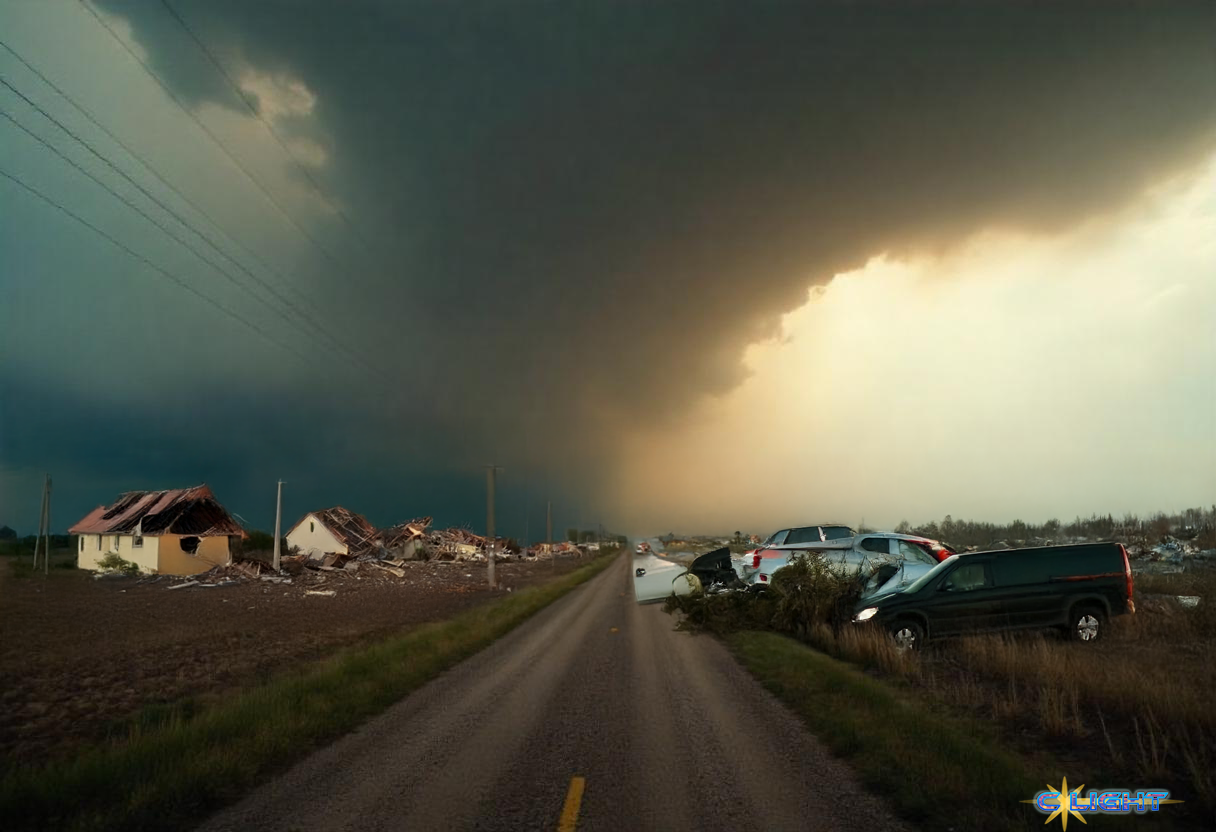Governors of Mid- and Southwestern states were issuing emergency declarations over the weekend as a broad band of devastating storms caused wildfires, dust storms, and tornados that destroyed the lives and property of thousands, perhaps millions of people Friday and Saturday. Making matters worse, the storms are not done. Forecasters warned millions of people across Southern states to stay on alert for tornadoes, high winds, and thunderstorms. As the storm hits the East Coast, it is expected to move Northward, possibly as far as Maryland.
The total amount of devastation is unlike anyone can remember seeing outside of a war zone. Entire towns are gone. Even Oklahoma’s Governor lost a home to wildfire. Major Interstates remain closed for accident investigations. As the sun comes up this morning, no one is expecting the picture to get any better.
In Kansas, eight people died in a 55-car pileup caused by a windstorm. Scattered tornados across the state of Missouri killed at least 12. Mississippi Gov. Tate Reeves announced six people died in three counties and three more people were missing late Saturday as storms moved further east into Alabama. Three additional deaths were noted in Arkansas. To the north, the National Weather Service issued blizzard warnings for parts of far western Minnesota and far eastern South Dakota starting early Saturday. Snow accumulations of 3 to 6 inches (7.6 to 15.2 centimeters) were expected, with up to a foot (30 centimeters) possible. Winds were expected to cause whiteout conditions.
There’s no way this storm isn’t unsettling. Missouri resident Dakota Henderson told the Associated Press that he and others rescuing trapped neighbors found five bodies scattered in the debris Friday night outside what remained of his aunt’s house in hard-hit Wayne County. “It was a very rough deal last night,” Henderson said Saturday not far from the splintered home from which he said they rescued his aunt through a window of the only room left standing. “It’s really disturbing for what happened to the people, the casualties last night.”
While weather extremes are normal during March, this storm hits differently. “What’s unique about this one is its large size and intensity,” said Bill Bunting of the National Weather Service’s Storm Prediction Center in Norman, Oklahoma. “And so what that is doing is producing really substantial impacts over a very large area.”
Bailey Dillon, 24, and her fiance, Caleb Barnes, watched from their front porch in Tylertown, Mississippi, as a massive twister struck an area about half a mile away near Paradise Ranch RV Park. While park management said that all residents were safe and accounted for, the devastation to the area took a toll. “The amount of damage was catastrophic,” Dillon said. “It was a large amount of cabins, RVs, campers that were just flipped over. Everything was destroyed.” She reported that school buildings were included in the destruction.
The stories are frightening. The pictures are horrific. While it’s not unusual to see tornado devastation in a single area as we move through the Spring, a storm of this size potentially affecting over 100 million is the type of event meteorologists dread. With severe cuts in the number of NOAA employees available to track storms and weather indications, the ability to forecast accurately is diminished and could possibly be blamed for the high number of fatalities.
More bodies will likely be found today among the rubble. On the back side of the storms, rain continues to fall, raising the possibility of flash floods in already devastated areas. We’re not out of this yet.
Discover more from Clight Morning Analysis
Subscribe to get the latest posts sent to your email.










